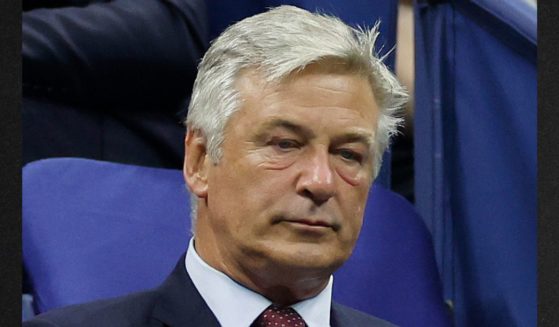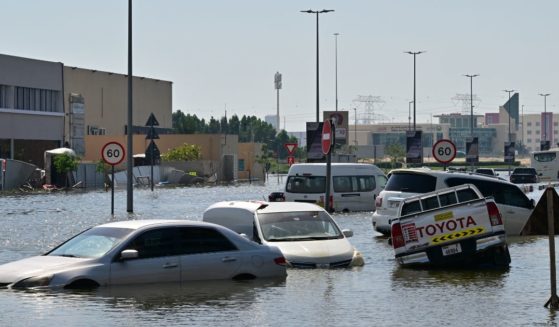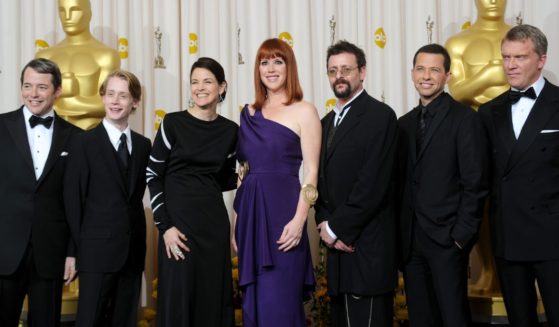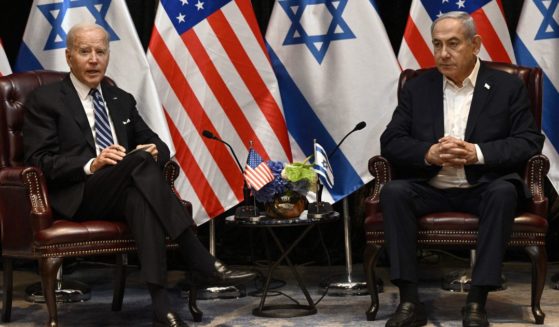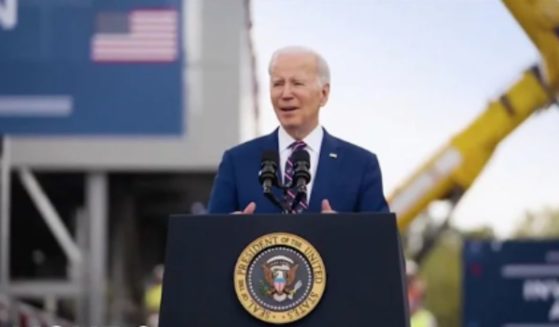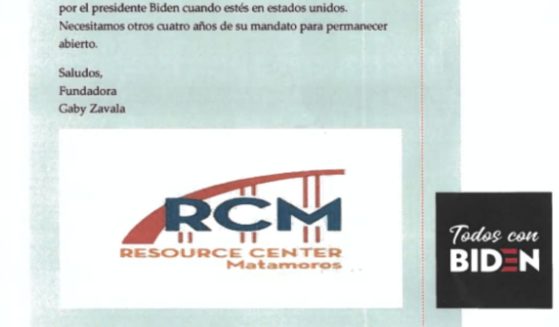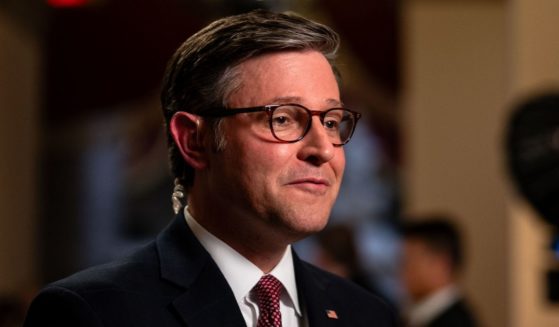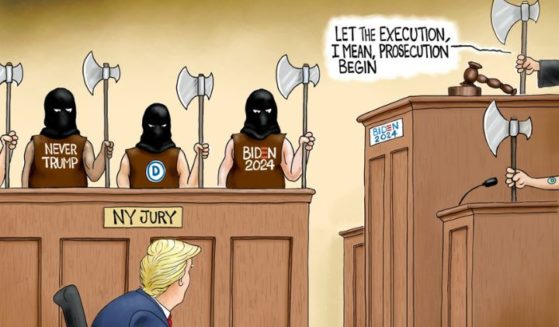At Least 200K Mismatched Signatures: Study of 2020 Maricopa County Ballot Envelopes Points to Flawed System
Shiva Ayyadurai, the founder of the Election Systems Integrity Institute, has released a study concluding that the Maricopa County, Arizona, mail-in ballot signature verification process is deeply flawed.
The study, released last week, found that the county allowed approximately 200,000 ballot envelopes with mismatched signatures to be forwarded for counting without further review.
Ayyadurai, a systems engineer with multiple degrees from the Massachusetts Institute of Technology, testified last fall before the Arizona Senate regarding the findings of the Maricopa County 2020 general election audit.
One of his most noteworthy statements was that his team determined there were 34,448 duplicate ballot envelopes from 17,126 unique voters.
Maricopa County officials rejected the finding at the time and released a report in January stating that the reason for the duplicate envelopes was that those ballots had gone through the curing process, where the ballot was returned to the voter to correct a lack of signature or another deficiency.
However, using the most conservative standards, ESII calculated that many more should have been returned.
Researchers reported that 11.3 percent of the approximately 1.9 million mail-in ballots should have gone through the curing process, rather than the 1.31 percent that did.
That translates to more than 215,000 needing to be cured versus the “upwards of 25,000” identified by Maricopa County.
“I found it fascinating that they didn’t give us an exact number. They just said up to 25,000,” Ayyadurai told The Western Journal, noting the county called it a “rigorous signature verification process.”
“So the bottom line is this, that if you’re doing curing, that means for every cured envelope, there should be the verified and approved [one]. That’s what they’re saying,” he added.
“Which means you should know exactly how many were cured. Why did you say, ‘Upward of 25,000’? Because we found out exactly 17,126 were duplicate images, that means we definitively know how many were cured. Why isn’t the county saying exactly how many were cured?”
Maricopa County said it rejected only 587 ballots of those that went through the curing process. In other words, just 0.03 percent of the mail-in ballots cast were not allowed to be counted.
Ayyadurai said it’s noteworthy the county has not tried to explain the difference between the 25,000 and 17,126 figures.
“I think the crickets is what’s interesting. There’s absolute silence from the county,” he said.
He said the county “viciously” attacked him last fall for not knowing the curing process was the reason for duplicate ballot envelope images for the same voter.
ESII calculated that more than 215,000 envelope ballots should have gone through the curing process by taking a sample of 2,700 ballot envelopes and matching them against signatures on file with the Maricopa County Recorder of Deeds.
It said the sample size has a 99 percent confidence level with a plus or minus 2.5 percent margin of error.
Ayyadurai said the county refused to turn over the signatures on file with the Elections Department, though the Senate had specifically requested them.
ESII followed a two-step signature review process seeking to mirror the county’s training manual for election workers.
“Novice” reviewers, as Ayyadurai called them, are the first level of identity verification. They then pass on any signature mismatches to the more expert supervisors, who either determine the signatures in fact match or reach out to the voter to cure the defect.
ESII trained three examiners with the same level of instruction given to the novice reviewers and then brought in three professional forensic document examiners.
The three novice reviewers individually found a no-match rate among 2,700 sample envelopes of between 23.1 percent and 31.2 percent.
The expert reviewers identified signature mismatches ranging between 23.4 percent and 71.1 percent.
Just to err heavily on the side of caution, Ayyadurai said his reseachers set aside every envelope where all six reviewers agreed the signature was not a match based on the chance the deed signature and the ballot envelope were not for the same person.
He said a significant number of these 290 discards almost certainly were the same, given the matched addresses, etc.
“So what we did was we gave the county the benefit, the doubt. And guess what we did? We threw those away,” Ayyadurai said. “But when we submitted to the Senate, the attorney general, many of those were actually good because the address matched, everything matched. But we were being very, very conservative.”
Using this process, the researchers found the mismatch rate was 11.29 percent, meaning 215,856 ballots should have gone through the curing process of the 1.9 million submitted.
The county rejection rate was 2.3 percent for those going through the curing process — 587 ballots of the 25,000.
When that rate is applied to 215,856 envelopes, 4,965 ballots should have been rejected.
However, ESII calculated the number of ballots that should have been rejected could be as high as 21,547, based on the parameters chosen.
Democrat Joe Biden beat then-President Donald Trump by 10,457 votes in Arizona, so that potentially could have impacted the outcome of the election — although there’s no way at this point to know for whom those ballots were cast.
Ayyadurai would like to run his study again, this time using the actual voter signatures on file to achieve the most accurate results.
The engineer argued the system employed by the county is flawed, given that ESII’s review determined that 10 times as many ballots should have gone through the curing process than did.
“So we’re not saying anyone did fraud, but we’re saying you clearly have a flawed system verification process,” he said.
The election is a systems process, he said.
“The input is the number of voters, and the output is you want valid voters voting,” Ayyadurai said.
The ESII study, which he said was the first of its kind to calculate the mismatch rate, showed there is a “big leak” where the process is not verifying that enough of the ingredients used are bona fide, Ayyadurai said.
The response should be “Let’s tighten it up,” he argued.
Asked about Georgia’s new requirement for voters to provide their driver’s license number or state identification number to obtain a mail-in ballot, Ayyadurai said it’s “at least getting closer to IDing the person.”
“So I think it’s headed in the right direction.”
He pointed out even some on the left are willing to concede the signature verification system is flawed, as David Graham wrote in The Atlantic in October 2020.
“This is one of those issues, maybe we can unite the country around, left and right, even the left,” Ayyadurai said. “They have a different solution, which is to let every signature through.
“But the reality is they have acknowledged that this is an important issue, that, you know, they’ve said it’s ripe for error.”
UPDATE, March 18, 2022: The Western Journal reached out to Maricopa County officials for a response Monday and received the following email after publication Thursday from Megan Gilbertson, communications director for the county’s Elections Department:
“Maricopa County produced hundreds of thousands of documents, data and equipment to the Arizona Senate about every topic imaginable concerning the election. This included envelope images, voter registration information and the signatures on those documents. We responded to every allegation put forward by the Senate and its subcontractors and conclusively demonstrated that Maricopa County administered the election with integrity and the results were accurate and reliable.
“In addition, the accuracy and completeness of Maricopa County’s signature verification process was confirmed in court (Ward v. Jackson), where the plaintiffs randomly sampled signatures. The Arizona Supreme Court affirmed the lower court ruling, ‘conclude[ing], unanimously, that . . . the challenge fails to present any evidence of “misconduct,” “illegal votes” or that the Biden Electors “did not in fact receive the highest number of votes for office,” let alone establish any degree of fraud or a sufficient error rate that would undermine the certainty of the election results.’ (Ariz. S. Ct., December 9, 2020).
“Voter signatures and ballot envelopes are not public record. We have not released this protected voter information to any organization other than the Arizona Senate as required. We cannot speak to how this new ‘report’ came to its conclusions or interpreted Arizona election law, but we do have some questions of our own. Why were voter signatures posted online, which is a possible violation of A.R.S. § 16-168(F)? How is comparing signatures from one unrelated public recorded document to an early ballot envelope signature consider a viable way of proving identity for voting purposes? What law allows for this comparison?
“These questions don’t even cover the faulty data extrapolation used in the report. Given the number of false and misleading claims issued in EchoMail’s September 2021 report to the Senate, it’s not surprising this more recent ‘report’ also uses faulty analysis to draw its conclusions.
“The 2020 election is over. Our staff spent thousands of hours responding to the Senate’s inquiry of the 2020 elections. We continue to stand by the integrity of our workers and the effective checks and balances in place that allow us to provide free, fair, and accurate elections.”
Truth and Accuracy
We are committed to truth and accuracy in all of our journalism. Read our editorial standards.

